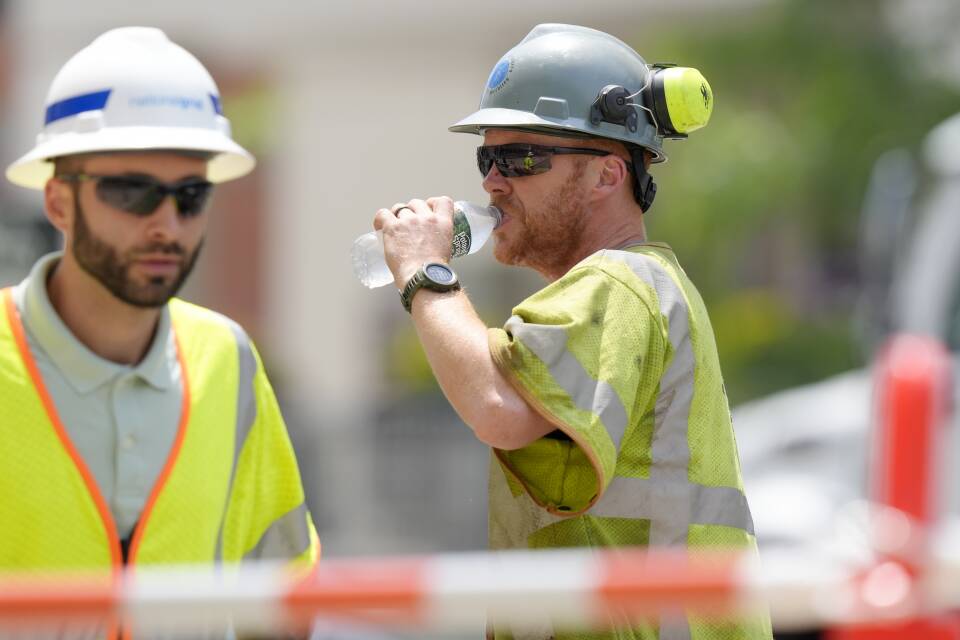Recent research highlights a disturbing reality: Boston is sinking. At the same time, our city is contending with rising sea levels. The land beneath us is gradually moving in the opposite direction.
That’s far more than just a curiosity. As climate change accelerates, the issue is becoming more pressing. There are real-world implications for Boston’s infrastructure, homes and businesses, as well as long-term sustainability.
UMass Lowell professor and hydrogeologist James Heiss joined GBH’s All Things Considered host Arun Rath to help unpack what’s happening beneath our feet. What follows is a lightly edited transcript.
Arun Rath: Let’s start off by having you explain exactly what’s happening. It sounds disturbing to think that the ground beneath Boston is sinking. What exactly is going on?
James Heiss: First, subsidence is a gradual lowering — or sinking — of the land surface. And, really, it’s been happening for thousands of years, and it’s going to continue for thousands of years in the future. But the issue is that humans have accelerated it.
Rath: So urban subsidence is something that might happen naturally, ordinarily, with cities?
Heiss: Yeah. For Boston, we kind of have a unique case. There are two processes that are contributing to subsidence here.
The first process that’s causing subsidence in Boston is glacial isostatic rebound. The way that this works is: About 18 to 20,000 years ago, there was a very large ice sheet over much of New England and parts north of New England. That ice sheet had a tremendous amount of weight to it — so much weight that it pushed down on the crust of the Earth.
Outside of where that ice sheet was located — on its peripheries, on the boundaries of it — the land surface rose up. And now, today, without that ice sheet in place because all that ice has melted, those parts along the periphery of where that ice sheet once was, are now sinking. And that’s what Boston is now experiencing.
Rath: Is that also why climate change has accelerated that process you’re talking about?
Heiss: In a way. I think where climate change comes into play here is — sea level rise is a part of climate change, so if the land surface is now subsiding, then relative sea level rise — that is, from an observer on the shoreline — is accelerating in part because of this subsidence.
The second issue that is causing subsidence in Boston — listeners may be aware — is that Boston is covered in infill sediment. In the 1800s, when Boston was expanding, they would bring in sediment by the trainloads and fill in marsh areas for settlement. Now, today, that infill sediment is now settling, and the homes and buildings on top of that sediment are now slowly sinking.
“In Boston, we currently experience, on average, about 15 king tide flooding events per year. ... We can expect about 50 king tide flooding events per year by the year 2050.”James Heiss, UMass Lowell professor and hydrogeologist
Rath: With this rate of sinking, as we understand it, what is at risk in Boston in terms of damage?
Heiss: One of the issues is that, as the land subsides, we’re going to feel the impacts of storm surges, sea level rise, king tide flooding and the impacts of extreme events are going to be more pronounced. Again, that’s because as the land sinks, relative sea level is going to rise, so we can certainly expect to feel more of those flooding impacts in the future.
In Boston, we currently experience, on average, about 15 king tide flooding events per year. Because of sea level rise — and subsidence is contributing about 15% to that — we can expect about 50 king tide flooding events per year by the year 2050.
Rath: We’ve talked about flooding. Are there other dangers that are posed by this sinking, in addition to flooding?
Heiss: Yes. One of them is actually the settling of building foundations. Parts of Boston are sinking at a rate of about an inch and a half per decade. Maybe initially, that doesn’t sound like a lot. But remember that Boston has among the oldest homes in the country, so if there’s a home that’s 100 years old, that comes out to 15 inches of settlement over 100 years. If that settlement takes place differentially over a short amount of space, then that can have pretty significant implications for the structural integrity of building foundations.
Rath: I have to imagine there are probably areas of Boston more at risk of damage than others.
Heiss: Yes. Areas in Boston that are built on infilled sediment are likely to be more susceptible to land subsidence as those infilled sediments begin to settle, and continue to settle.
Rath: This is a difficult question, but I guess the big question: What should we do, and how worried should we be? Are local and regional leaders taking this issue seriously enough?
Heiss: Well, I think the effects of subsidence are primarily felt from the impacts of sea level rise and increased flooding. I could be wrong, but I think city planners aren’t necessarily considering subsidence directly — but they may be considering it, or indirectly considering it, in their planning of the impacts of sea level rise.









